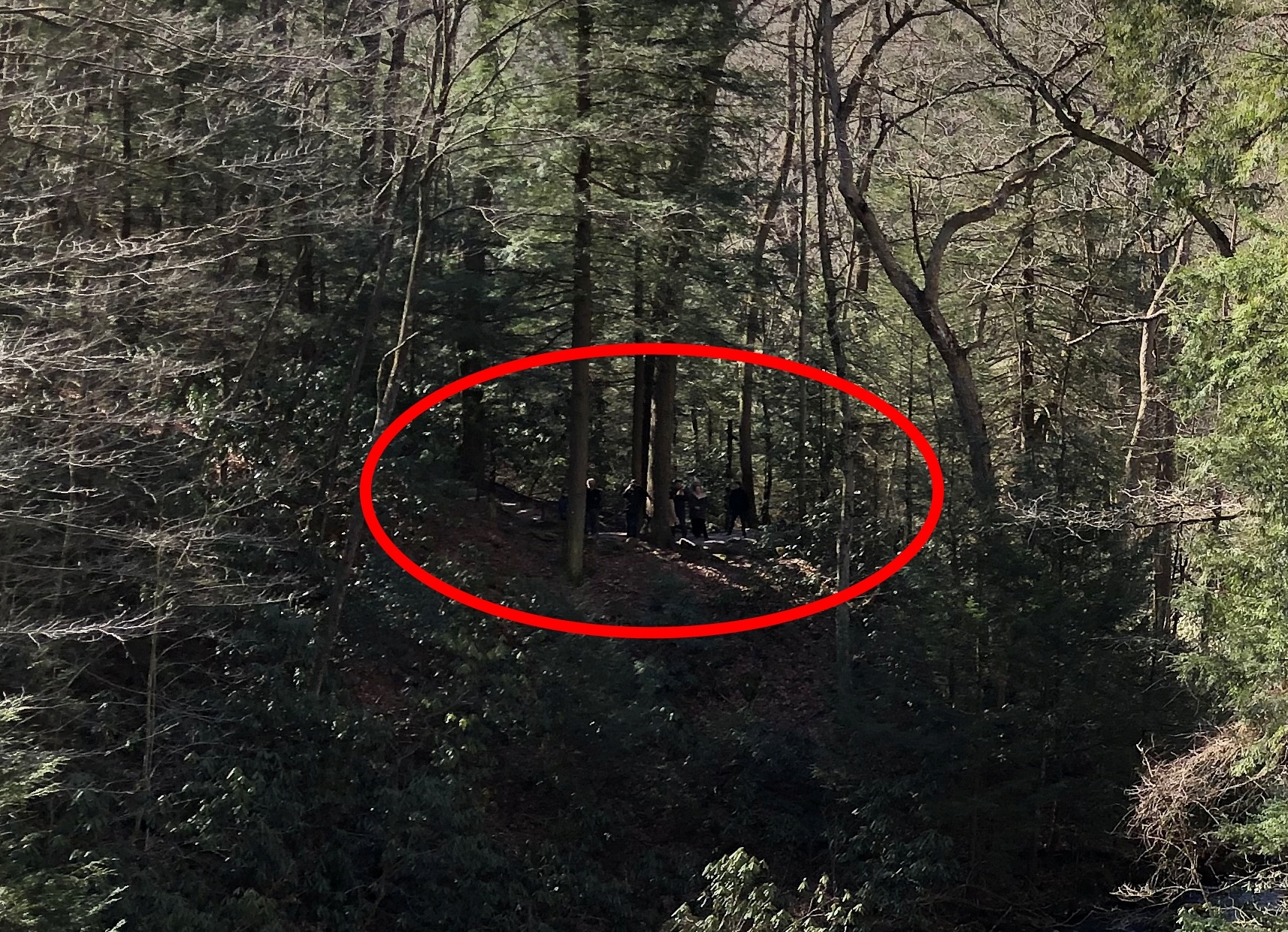On the grounds of Fallingwater, there is a path with signs that lead you to The View. That’s what the signs call it. When you get there, The View is there for you.
Search for “Fallingwater” in Google Images, and the vast majority of the images look something like the above. For good reason: it’s arresting. I will give Frank Lloyd Wright his due on that. The placement of the house was a stroke of genius from The Genius.
Originally the idea had been to build a house with a view of the falls, but he made it part of the view. Had the original idea prevailed, people might still visit if the house still existed — it would be a FLW design, after all — but it wouldn’t be nearly as distinctive as it is.
Before we visited Fallingwater, I wondered what other views there were of the famed FLW creation in rural Pennsylvania. The answer is, any number you care to see.


We arrived on the morning of March 20, the vernal equinox, though as far as I know that fact didn’t affect our experience in any way. The low season of March, on the other hand, definitely added to the experience. Guided tours, the only way for ordinary folk to visit Fallingwater, had begun for 2023 only nine days earlier.
We might not have seen the place clothed with the greens of summer or the multicolors of fall, but we did enjoy how few people were around. For a few minutes at The View, for instance, I had the place to myself, because you don’t actually visit it as part of the tour. That comes afterward, when you amble down there yourself.
If you’re so inclined, of course, there’s really more than one view even at The View. For instance, straight up. You’d never know you’re on the grounds of a World Heritage Site at that angle.
We took turns touring the house, while the other waited with the dog. Originally I’d scheduled a 10:30 tour and one at 2:30, with the idea that we’d have lunch in between. But not all of the tours in between were fully booked – as I’d think they are in the summer and fall – so after I went on the 10:30 tour, Yuriko was able to move up to the one starting at 11:30 without any issue.
Signs greet you in front of the visitors center.

It’s a short walk from the visitor center to the house, but enough to get a sense of the surrounding Laurel Highlands.

Amazingly, the Western Pennsylvania Conservancy, which has owned the property since 1963, allows photography inside Fallingwater. Actually, only in the first-floor living room, but still. That’s one of the few FLW properties I’ve visited that does so.

Once upon a time, owning a successful urban department store (in Pittsburgh, in this case) meant that you could hire a starchitect to design your summer house in the woods, even as the Depression lingered. After quarrels with said starchitect and vast cost overruns, naturally, Fallingwater was completed in the late 1930s, including the main house, but also adjacent guest quarters.
A portrait of the original owner, Edgar Jonas Kaufmann (1885-1955), looks out into the living room, but as a young man – before Fallingwater ever came to be.
Because Kaufmann’s son, Edgar Jonas Kaufmann Jr. (1915-89), oversaw the transition from family summer home to house museum in the early ’60s, the family’s furnishings and artwork are largely still there, another novelty for a FLW house.
I was happy to see an orrery. It’s actually a Trippensee Planetarium, a brand that vanished with the 20th century.
From the main balcony, you get a view of The View. That is, you can see the spot downstream on Bear Run creek where people stand to see The View.
Note the people gathered down at The View, looking up. They’re hard to see in the image, but they are there.

At that moment, for them anyway, I was part of The View.